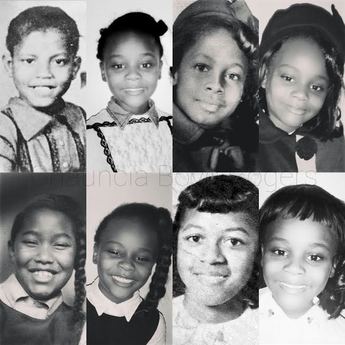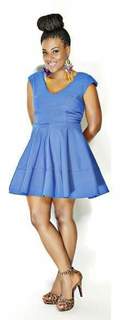My job as a mother is to prepare my daughter for life outside my reach. That means before she goes into the world and succumbs to society’s influence, I need to do my best to build her in every area of her life. The purpose of the black history lesson I created was to teach my daughter that she can do anything and she can become anything. Just like any other person, Ava is multifaceted and she falls into several demographics. On the short list, she is a young black Christian girl. And while I could have created lessons to build her up as a youth or even a Christian, I chose to focus on her identity as a black girl who will someday become a black woman. My five-year-old daughter lives in a world where a major beauty line describes lighter skin as “normal” and where a major women’s magazine tells her that her beauty is dead. Those are just two notorious examples of the societal ills my daughter will have to challenge. And while neither of those gaffes inspired my project or even promoted the my edifying talks, I am motivated by similar incidents that I have seen, heard about, or experienced in my 31 years. My purpose is not really to offer commentary on either of these ills, but we need to understand the insinuations and the effects. Negligence led to a labeling gaffe that promoted a product as being for those with “normal to dark skin". Now to me, the underlying message is that a normal to dark spectrum is the same as a “light to abnormal” spectrum; meaning there is something odd about dark skin. But that was explained as an oversight. When 4/5 of the black women mentioned in a beauty column are on the bad side while 20 out of 21 white women are told they have the goods, the similarly neglectful message is that black beauty isn’t beautiful. Perhaps there was no ill intent, but the writer and editors overlooked the subtle (or not so subtle) implication. I get that there were apologies, explanations, retractions, and a relabeling. But as the saying goes, you can’t “unring” a bell. I won’t go so far as to make accusations of racism. But I am certain of the racial insensitivity. More than likely, that insensitivity will never cease to exist on the parts of any race. That goes back to building our girls up before society can break them down. Every day I make it a point to tell my daughter that she is smart, beautiful, compassionate, and awesome. Parodied thoughts of a similar pep talk in “The Help” aside, it’s real and necessary. That coincides with the importance of teaching our daughters black history. As a disclaimer, I’d like to say that parents and anyone else responsible for shaping black youth—male or female—should teach on black excellence. But specifically black girls need to know that there are people of their race and gender with outstanding achievements. I never intended for any of the women Ava portrayed to be her role models. I don’t know them personally, and to me, it’s more important for Ava to be herself. And as far as influence, I believe that responsibility is mostly mine. I wanted the icons I chose to serve as inspiration. Over 28 days, Ava learned about more women than we were able to portray. But she captured the essence of 26 women and four young girls who were specifically selected because of what they represented. My lessons in black history helped my daughter understand the importance of assertiveness, inner beauty, intelligence, business acumen, perseverance, bravery, and humanitarianism among several other things. So when the world tells her she’s ugly, stupid, stubborn, angry, selfish, or unable. She’ll have what she needs to reject that labeling. Of course, my lessons are not all encompassing and this is not to say that she will never have any trouble or struggles. But I am confident in knowing that I have planted the right seeds. When our girls hear that people who look like them have accomplished great things, it lets them know that they can do the same or it motivates them to blaze new trails. Nonexistent is the need to convince other races to learn “white history” because such is accepted as just history. And it’s peddled to everyone regardless of the mis-education or misinformation it might perpetuate. But somehow, there’s always an urge to explain the importance of learning black history. It’s important for everyone to understand that “black history” is American history and even world history. And when society incorporates black contributions and accomplishments—not as a subset—but as concurrent history, racial tolerance can increase. Parents of other races have the same task as black parents, albeit for different reasons. They would be remiss not to share the facts about which people and what events shaped our country. Read More: Refinery29: This Little Girl Recreated 28 Iconic Portraits ForHarriet: Mother-Daughter Duo's Photo Project Features 5-Year-Old as Iconic Black Women Ebony: Mother Teaches 5-Year-Old Daughter Black History Lesson Through Dress Up [PHOTOS]
0 Comments
Leave a Reply. |
Guest FeaturesThere are many different definitions of "parent" and a diversity of perspectives on parenting. One thing remains... good parenting is rooted deeply in love. This is our attempt to capture real stories from real people. |


